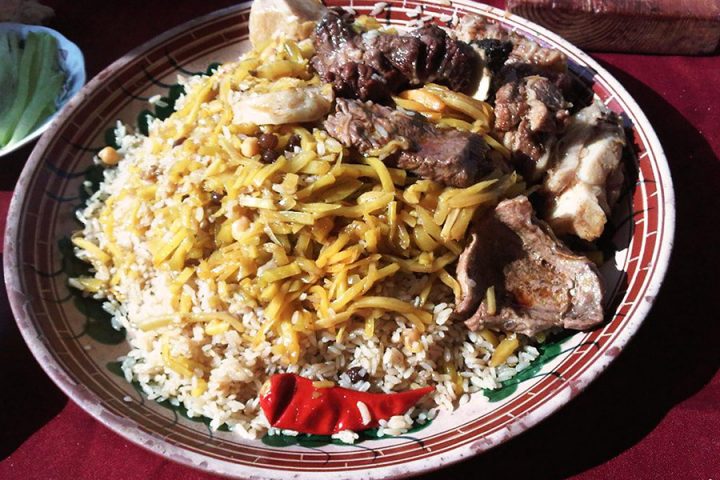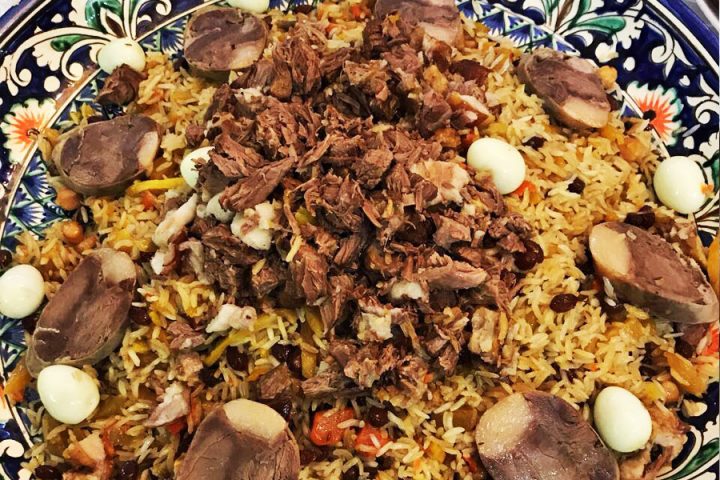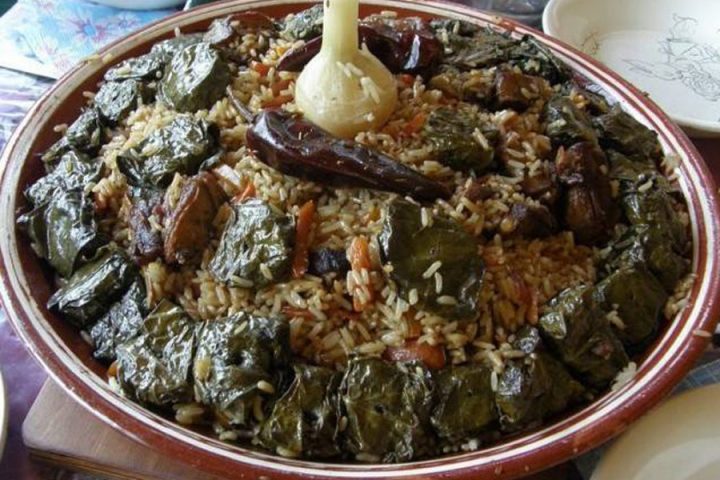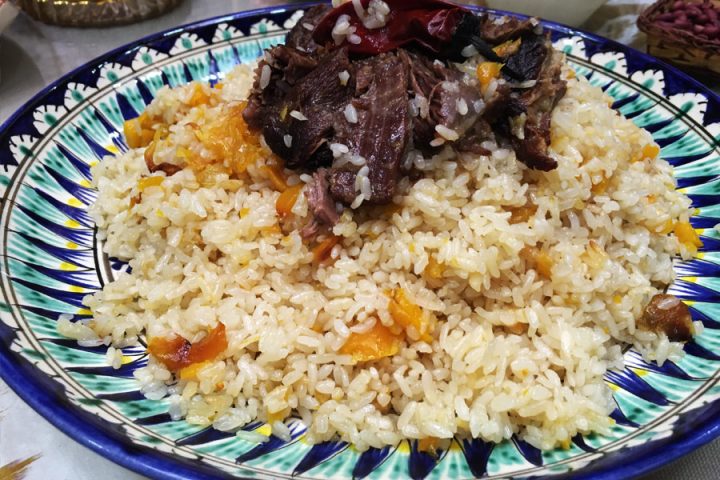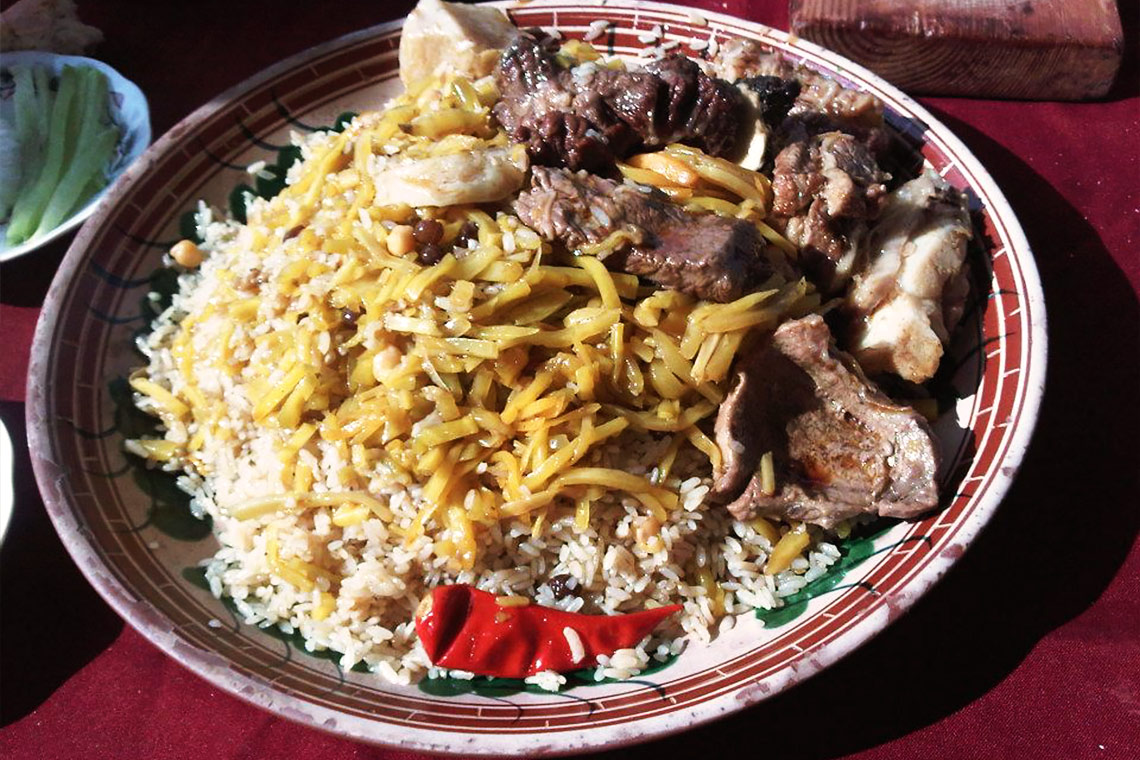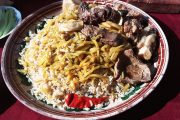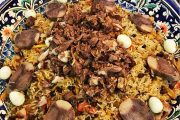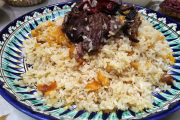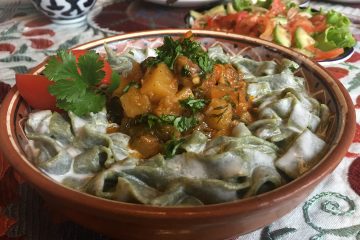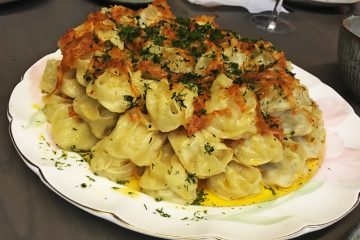These are words of Caroline Eden and Julia Ford – bestselling authors of “Samarkand” (probably the best book about the Central Asian cuisine published in the West) truly express the way how Uzbeks proud about this dish – on the very top of all-time favourites, eaten at least twice a week (some start their day with Nahor plov in early morning and end on the wedding table with Tuy plov) everywhere they go outside their town, as each province has its own variety.
Distant relative of Indian pilaf and Spanish paella, as well as a number of other dishes consisting of rice and meat, yet Plov is distinct by its cooking method, certain ingredients, taste and serving (usually on big ornate plate – lyagan).
Talking about the history of Plov, some refer to chronicles of Alexander the Great’s invasion to Sogdiana, when ancient Greeks tried local dish with lamb and rise, others claim that Tamerlane himself developed the recipe of dish that would keep his victorious soldiers always strong. Legendary 19th century explorer and scholar in his famous “Travels in Central Asia” expressed amazement how his local caravan companions could sustain the long desert crossings by eating large quantities plov. Nowadays, the current generation of chefs experiment hitting Guinness Book record by cooking 8 tons of the dish in one go (all eaten by the crown in one hour) or trying new fusion recipes. Though principal approach remains the same – fry meat and onion, steam these with carrot and spices, finish by adding special rice boiling and steaming again. Sounds simple, but many small details, additional seasonal ingredients (like queens or green apricot) and specific occasion make plov truly difficult to cook from the first attempt. Interesting that, home plov is mostly cooked by women, the best chefs or Oshpaz are usually men. They make plov in large special pans (Kazan) in the outside for every occasion from birth celebration, wedding to funeral, as well as in most of the restaurants and tea-houses (Choy-khona).
Veres Vert offers plov master-classes and demonstrations, usually in family houses and craftsmen workshops, available practically in every town along different itineraries.


